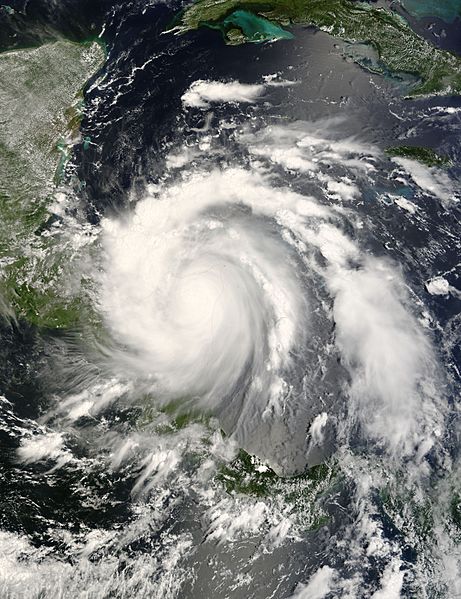Image: Felix 04 sept 2007 1610Z

Description: Category Five hurricanes are rare. Rarer still is the storm that makes landfall as a Category Five storm—most weaken before hitting land. Yet, exactly two weeks after Hurricane Dean struck the Yucatan Peninsula as a Category Five storm, Hurricane Felix roared ashore as yet another. Felix came ashore over northeastern Nicaragua on September 4, 2007, with sustained winds of 260 kilometers per hour (160 miles per hour), said the National Hurricane Center. Forecasters predicted that Felix would continue to move west over Honduras, El Salvador, Guatemala, and Mexico. Heavy rain in these mountainous regions could trigger devastating floods and mudslides. This area is the same region which suffered major damage from Hurricane Mitch in 1998 which took a similar track, and was one of the most destructive storms recorded, with some 11,000 deaths. Though better prepared this time for such a storm, many fear a repeat of Mitch’s devastation. The Moderate Resolution Imaging Spectroradiometer (MODIS) on NASA’s Terra satellite captured this image of Hurricane Felix at 10:10 a.m. local time (16:10 UTC) on September 4, 2007. At that time, Felix had slammed into the mountains of Nicaragua inland, and lost enough power to be rated a Category Three status hurricane with sustained wind speeds of 200 km/hr (120 mph). The clear eye present on September 3 the day before was now gone, but the storm retained the tight spiral shape of a very powerful storm. The large image provided above has a resolution of 250 meters per pixel, MODIS’ maximum resolution. The image is available in additional resolutions from the MODIS Rapid Response System.
Title: Felix 04 sept 2007 1610Z
Credit: http://earthobservatory.nasa.gov/NaturalHazards/natural_hazards_v2.php3?img_id=14490
Author: NASA image by Jeff Schmaltz, MODIS Rapid Response Team, Goddard Space Flight Center.
Permission: This file is in the public domain in the United States because it was solely created by NASA. NASA copyright policy states that "NASA material is not protected by copyright unless noted". (See Template:PD-USGov, NASA copyright policy page or JPL Image Use Policy.) Warnings: Use of NASA logos, insignia and emblems is restricted per U.S. law 14 CFR 1221. The NASA website hosts a large number of images from the Soviet/Russian space agency, and other non-American space agencies. These are not necessarily in the public domain. Materials based on Hubble Space Telescope data may be copyrighted if they are not explicitly produced by the STScI.[1] See also Template:PD-Hubble and Template:Cc-Hubble. The SOHO (ESA & NASA) joint project implies that all materials created by its probe are copyrighted and require permission for commercial non-educational use. [2] Images featured on the Astronomy Picture of the Day (APOD) web site may be copyrighted. [3] The National Space Science Data Center (NSSDC) site has been known to host copyrighted content even though its photo gallery FAQ states that all of the images in the photo gallery are in the public domain.
Usage Terms: Public domain
License: Public domain
Attribution Required?: No
Image usage
The following page links to this image:

